It looks like you're using an Ad Blocker.
Please white-list or disable AboveTopSecret.com in your ad-blocking tool.
Thank you.
Some features of ATS will be disabled while you continue to use an ad-blocker.
share:
The first earthrise photo taken during Apollo 8 was a black & white photo, but this guy went and remastered it using colour information from the
subsequent photos.
So, ladies and gentlemen, behold, the sight that made the Apollo astronauts go WOW!
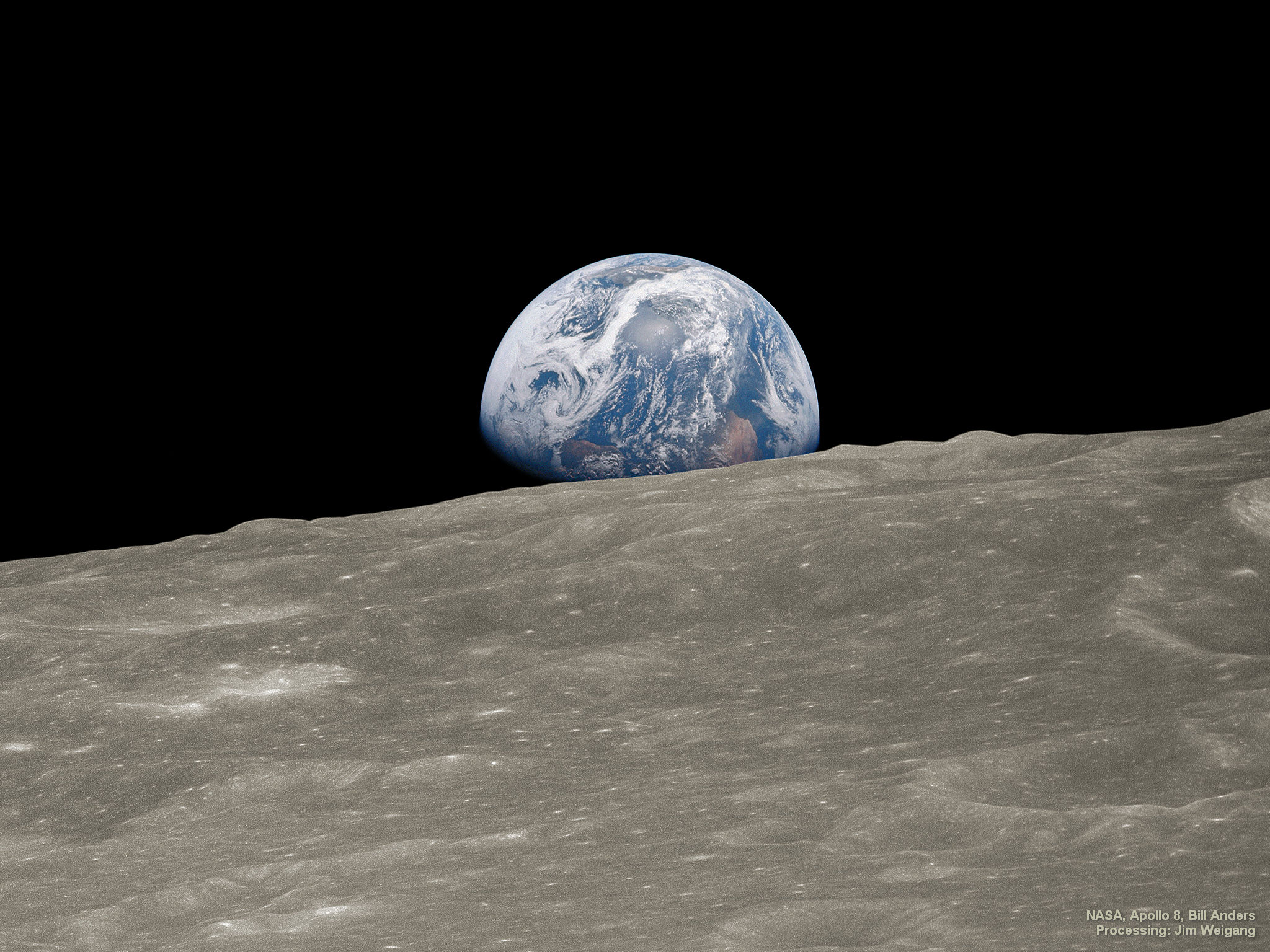
jw9c.blogspot.com...
So, ladies and gentlemen, behold, the sight that made the Apollo astronauts go WOW!

Oh my God, look at that picture over there! There's the Earth comin' up.
Wow, is that pretty!
Those were the first words out of Bill Anders's mouth when he saw the Earth coming 'round the bend as Apollo 8 orbited the moon on December 24, 1968. He quickly snapped a black & white picture with the camera he'd been using to photograph the moon's surface, and then called to his colleagues for color film. It took a while for them to find the film, and the Earth kept moving away from the lunar horizon, but a minute later he snapped two more frames in color which became the iconic image of the planet known as "Earthrise." The view that first struck Anders, though—of the Earth just slipping into view—was recorded only in black & white.
A couple years ago I made a "2K" composite of the color and black & white images, but earlier this month I discovered higher-resolution 4 and 5K scans of the original 70mm frames and set about making a new version. The black & white frame is very crisp and, when stacked with the color frames, can be sharpened to a remarkable degree. The picture above is the result: Bill Anders's first black & white photo, with colors on the Earth supplied by the two later color shots. The lunar surface is from the black & white image, tinted slightly and brightness-adjusted to match the appearance of the moon as seen in modern DSCOVR satellite pictures of the moon transiting the Earth.
jw9c.blogspot.com...
The idea behind the image I posted above is so simple, I'm surprised it hadn't been done before (as far as I'm aware).
I love the idea of using colour information for a high-rez b&w image from another image, so I went ahead and recreated this procces for that iconic Apollo 8 photo:

Full-sized crop of Earth:
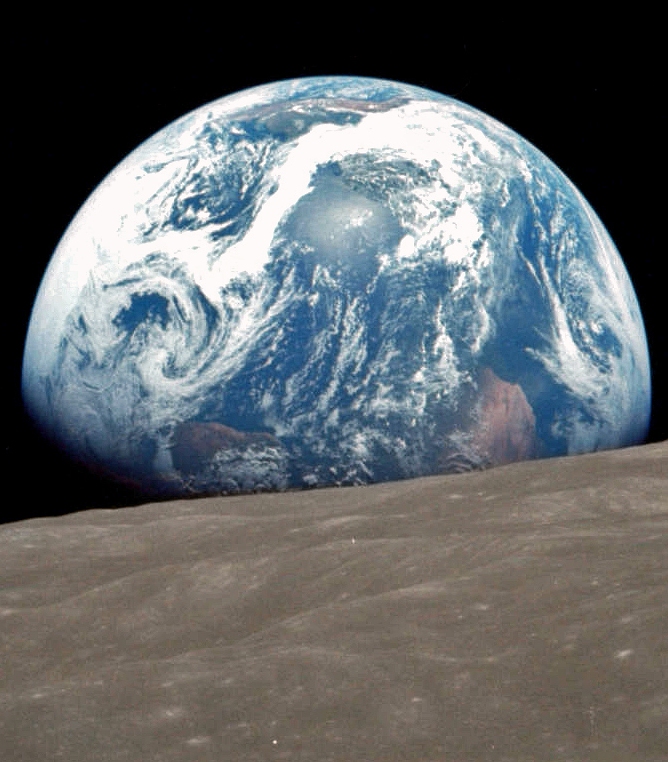
I used very high-rez scans found at Flickr:
www.flickr.com...
www.flickr.com...
www.youtube.com...
I love the idea of using colour information for a high-rez b&w image from another image, so I went ahead and recreated this procces for that iconic Apollo 8 photo:

Full-sized crop of Earth:

I used very high-rez scans found at Flickr:
www.flickr.com...
www.flickr.com...
www.youtube.com...
edit on 24-12-2018 by wildespace because: (no reason given)
Just coincidence, but from Houston this morning the ISS made a spectacular lunar flyby.
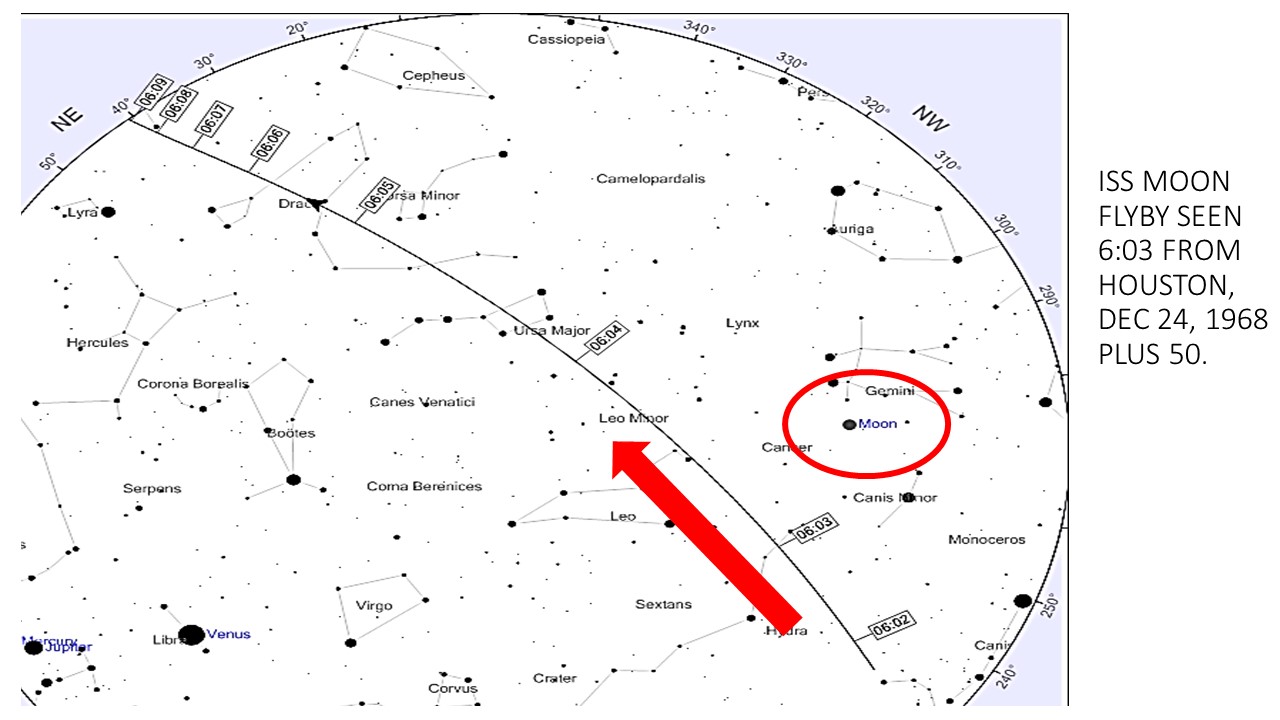

a reply to: wildespace
I have a B&W image I want to try this with - what's the best way of taking the colour information from one image and applying it to a different B&W one?
I have a B&W image I want to try this with - what's the best way of taking the colour information from one image and applying it to a different B&W one?
originally posted by: OneBigMonkeyToo
a reply to: wildespace
I have a B&W image I want to try this with - what's the best way of taking the colour information from one image and applying it to a different B&W one?
If the images match in terms of objects, size, and composition, it makes it very simple. Otherwise (like with this image) you'll have to do some image manipulation.
But the basic method is very simple: overlay a colour image over the b&w one (or the other way round), and use layer blending of either "color" or "saturation". That will plug the colours into the b&w image.
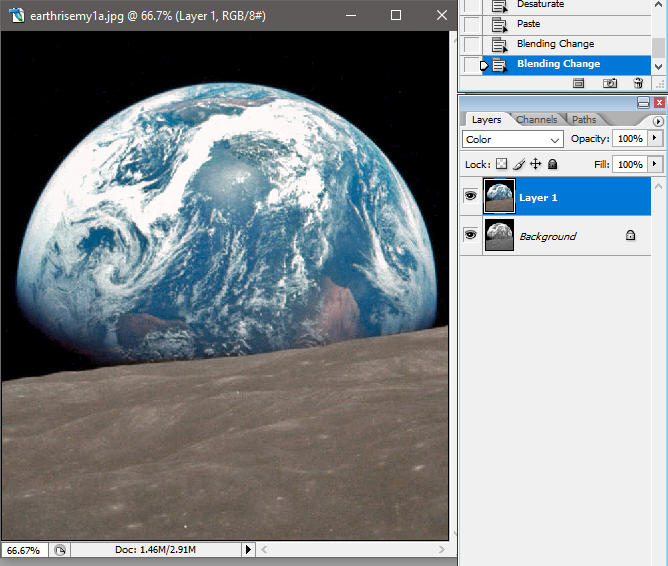
edit on 24-12-2018 by wildespace because: (no reason given)
a reply to: wildespace
Yeah I think that's my problem. The B&W image (while it is Earth) looks completely different to the colour ones I want to borrow the information from, and sometimes it's difficult to see where clouds end and ocean begins. I think I'm stuck with the good old fashioned painting by numbers method (convert to CMYK, add adjustment layers etc etc). Very tedious!
Yeah I think that's my problem. The B&W image (while it is Earth) looks completely different to the colour ones I want to borrow the information from, and sometimes it's difficult to see where clouds end and ocean begins. I think I'm stuck with the good old fashioned painting by numbers method (convert to CMYK, add adjustment layers etc etc). Very tedious!
originally posted by: OneBigMonkeyToo
a reply to: wildespace
Yeah I think that's my problem. The B&W image (while it is Earth) looks completely different to the colour ones I want to borrow the information from, and sometimes it's difficult to see where clouds end and ocean begins. I think I'm stuck with the good old fashioned painting by numbers method (convert to CMYK, add adjustment layers etc etc). Very tedious!
You can try doing it nontheless, with some image rotation and eraser tool. But a perfect alignment is how this method is supposed to be used.
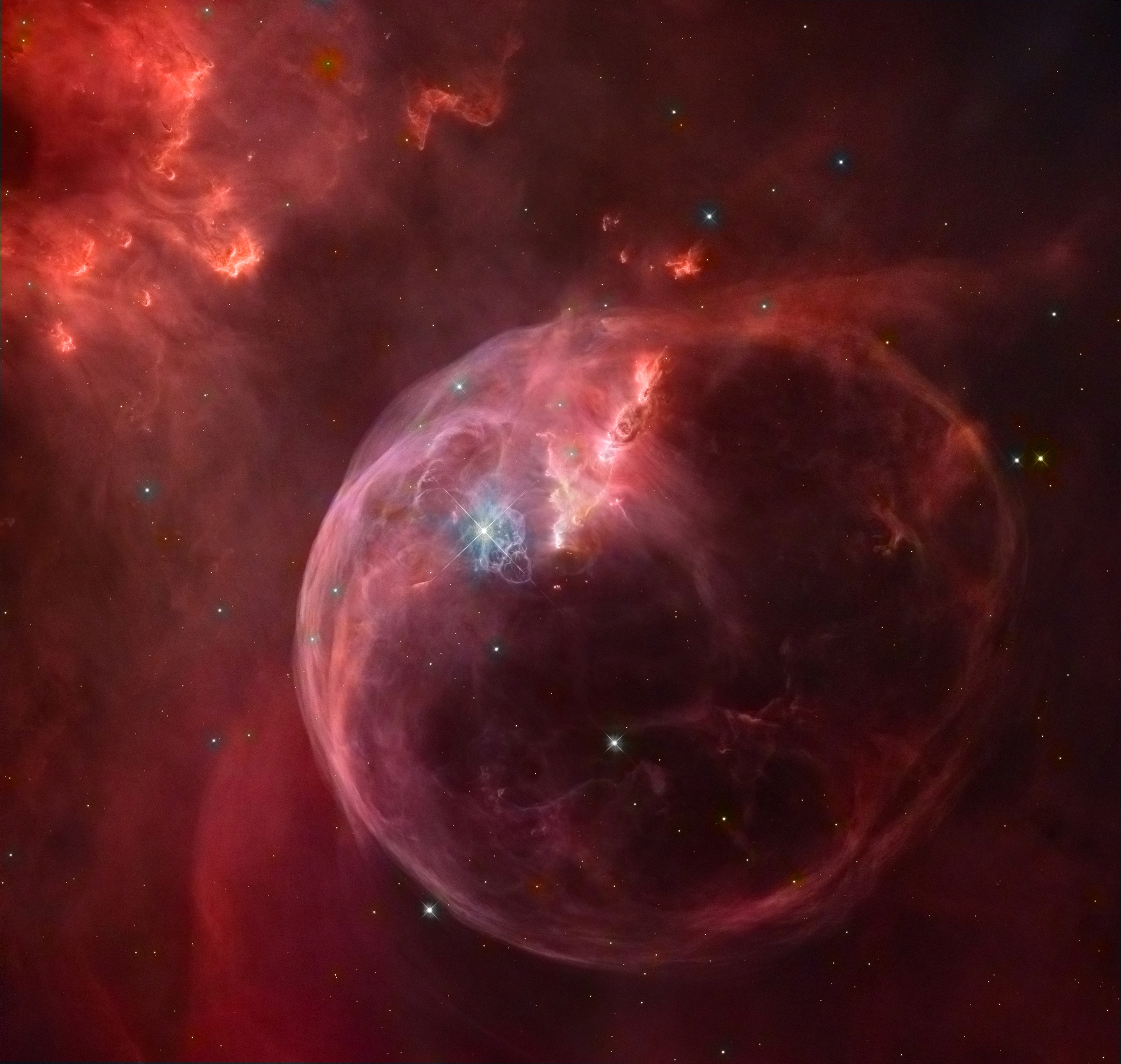
(false-colour Hubble photo + true-colour astrophoto)
edit on 24-12-2018 by
wildespace because: (no reason given)
new topics
-
Bigger than Covid
US Political Madness: 2 hours ago -
Modern Mind Control
General Conspiracies: 4 hours ago -
Trump Warns Time Magazine of Rising Anti-White Sentiment
2024 Elections: 6 hours ago -
Illegal Immigration Outlawed in Oklahoma Starting July 1
Social Issues and Civil Unrest: 6 hours ago -
California Must Spend 20 Billion on Power Grid Upgrades If It Wants EVs
Fragile Earth: 6 hours ago -
Young People Now Identifying as 'Gender Season' - seasogender, gender season, or gendersian
Social Issues and Civil Unrest: 7 hours ago -
Discussion on The Dover Demon
Cryptozoology: 7 hours ago -
Two lifeforms merge into one for first time in a billion years
Science & Technology: 8 hours ago -
What is "Genocide"?
US Political Madness: 9 hours ago -
International law versus "rules-based order"
New World Order: 11 hours ago
top topics
-
Two lifeforms merge into one for first time in a billion years
Science & Technology: 8 hours ago, 9 flags -
Illegal Immigration Outlawed in Oklahoma Starting July 1
Social Issues and Civil Unrest: 6 hours ago, 9 flags -
Trump Warns Time Magazine of Rising Anti-White Sentiment
2024 Elections: 6 hours ago, 8 flags -
California Must Spend 20 Billion on Power Grid Upgrades If It Wants EVs
Fragile Earth: 6 hours ago, 6 flags -
Modern Mind Control
General Conspiracies: 4 hours ago, 4 flags -
Cambridge professor founds signs of life on another planet
Aliens and UFOs: 12 hours ago, 3 flags -
Bigger than Covid
US Political Madness: 2 hours ago, 3 flags -
Discussion on The Dover Demon
Cryptozoology: 7 hours ago, 3 flags -
What is "Genocide"?
US Political Madness: 9 hours ago, 3 flags -
International law versus "rules-based order"
New World Order: 11 hours ago, 2 flags
active topics
-
Trump Warns Time Magazine of Rising Anti-White Sentiment
2024 Elections • 32 • : MrGashler -
Young People Now Identifying as 'Gender Season' - seasogender, gender season, or gendersian
Social Issues and Civil Unrest • 22 • : grey580 -
Illegal Immigration Outlawed in Oklahoma Starting July 1
Social Issues and Civil Unrest • 18 • : Sookiechacha -
October 7th: The Crumbling Facade of a Western Security Asset
Above Politics • 86 • : DontTreadOnMe -
Two lifeforms merge into one for first time in a billion years
Science & Technology • 31 • : Beesnestbomber -
International law versus "rules-based order"
New World Order • 41 • : Oldcarpy2 -
Candidate TRUMP Now Has Crazy Judge JUAN MERCHAN After Him - The Stormy Daniels Hush-Money Case.
Political Conspiracies • 996 • : Annee -
Bigger than Covid
US Political Madness • 17 • : Beesnestbomber -
Doctors Predict Epidemic of Prion Brain Diseases From mRna Jab
Health & Wellness • 47 • : tarantulabite1 -
What is "Genocide"?
US Political Madness • 44 • : YourFaceAgain
